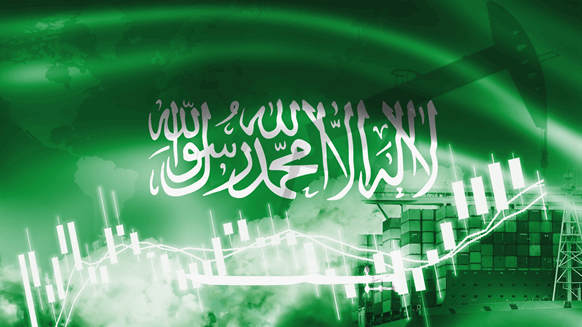
(Bloomberg) -- Saudi Arabia increased prices for some crude exports by the most in at least two decades, doubling down on a strategy to bolster the oil market after OPEC+ producers extended historic output cuts over the weekend.
The steepest jump in July exports will hit buyers in Asia, state producer Saudi Aramco’s largest market, according to a pricing list from the company on Sunday. The increases erase almost all of the discounts the kingdom made during its price war with Russia earlier this year.
Saudi Arabia is using all the tools at its disposal to turn around the oil market after prices plunged in March and April with the spread of the coronavirus. As the price setter in the Middle East, its increases may be followed by other producers.
Unprecedented output cuts led by the Saudis and Russia boosted prices in May, and the OPEC+ group decided Saturday to extend those limits through July. Brent crude has more than doubled since late April, though its still down 35% this year. It rose 1.7% to $43.02 a barrel by 6:55 a.m. in London Monday.
Still, oil refiners’ profits are being squeezed by crude’s rally, and the sharp Saudi hikes are likely to exacerbate that problem. Representatives for refineries from Europe and Asia expressed concern and said the new pricing would crush their margins.
Price War
The month-on-month increase in the official selling price for flagship Arab Light crude to Asia, which accounts for more than half of Saudi oil sales, is the largest in at least 20 years. Aramco raised Asian Arab Light by $6.10 a barrel from June to a premium of 20 cents over the benchmark.
The company increased all grades to Asia by between $5.60 and $7.30. That compares with an expected increase of about $4, according to a Bloomberg survey of eight traders and refiners.
Buyers in the U.S., the Mediterranean region and northwest Europe will also pay more for oil. Arab Light for northwest Europe was raised to a 30 cent premium over the benchmark from a discount of $3.70.
“Now we’re back to 2019 or even 2018 levels for many grades,” said Robin Mills, founder of Dubai-based consulting firm Qamar Energy.
Aramco made the steepest increases in its lighter grades, which are the easiest to process into gasoline. That suggests the company sees good prospects for the fuel’s revival, “though refinery margins remain very weak,” Mills said.
Saudi Arabia unleashed a price war in March when it slashed official selling prices by the most in three decades. The kingdom took the drastic step after failing to reach an agreement with Russia to extend production cuts in the face of the pandemic’s destruction of oil demand.
After top-level discussions, OPEC+ returned to negotiations a month later and hammered out the biggest output curbs in history, pledging to take nearly 10 million barrels a day off the market. U.S. production plunged by roughly 2 million barrels daily as low prices drove shale producers to shut wells.
OPEC+ chose on Saturday to renew production limits at almost the same level, instead of tapering them as planned at the end of June. Aramco, which typically announces pricing on the fifth day of each month, had delayed its July numbers until after OPEC+ members made their decision.
Saudi Arabia sells its crude at a differential to oil benchmarks, announcing every month the discount or premium it’s charging to global refiners. The so-called official selling prices help set the tone in the physical oil market, where actual barrels change hands.




No comments:
Post a Comment